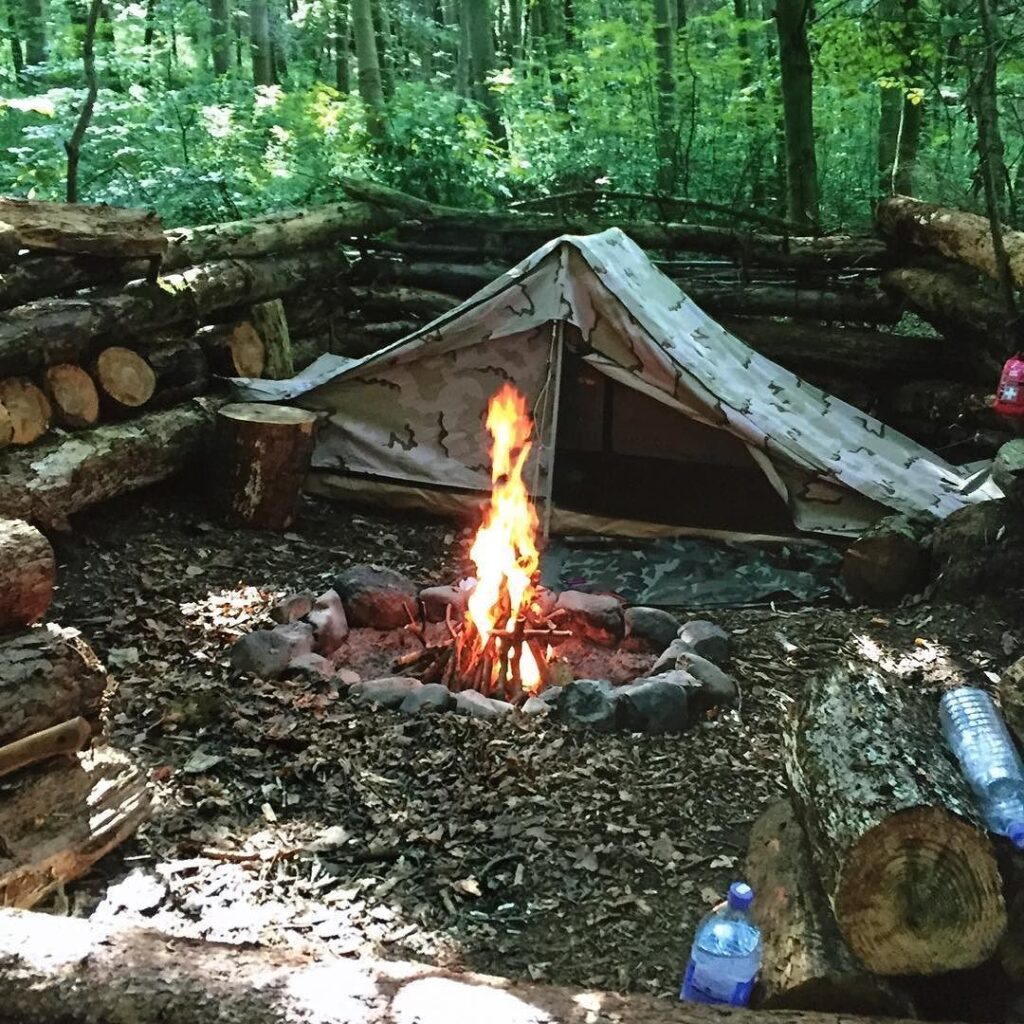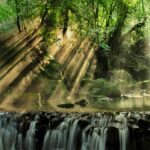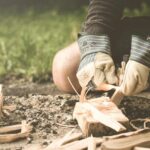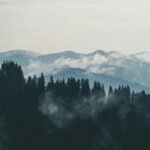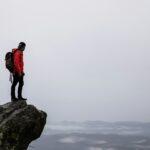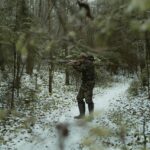Bushcraft, the art of thriving in the wild using skills passed down through generations, is a testament to human resilience and adaptability. As we delve into the diverse cultures across the globe, a fascinating array of bushcraft traditions comes to light. From the dense jungles of Southeast Asia to the vast tundras of North America, each tradition offers a unique perspective on survival and connection with nature.
The Way of the Maasai
The Maasai people of East Africa have honed their bushcraft skills for centuries. From tracking wildlife to reading the stars for navigation, their expertise in the savannah is unparalleled. The [Maasai people] have mastered the delicate balance between coexisting with nature and utilizing its resources for survival.
1. Reading the Stars
The Maasai people, inhabitants of the vast East African savannah, possess a unique skill set that includes reading the stars for navigation. This age-old technique not only guides them through the expansive landscape but also reflects a profound understanding of celestial patterns passed down through generations.
Celestial Maps in the Night Sky
In the inky darkness of the savannah, Maasai elders teach the younger generation to recognize constellations and use them as celestial maps. This deep connection with the stars showcases the Maasai’s ability to navigate with precision, even in the absence of modern tools.
2. Tracking Wildlife
Camouflaging Techniques and Silent Stalking
Survival in the savannah often hinges on the ability to track wildlife for sustenance or avoid potential threats. The Maasai’s expertise lies in their intricate knowledge of animal behavior, camouflaging techniques, and the art of silent stalking. These skills are essential for both hunting and evading predators.
Camouflage Clothing and Natural Disguises
Maasai hunters employ clever techniques, such as using natural materials for camouflage clothing and mimicking the behavior of local fauna, allowing them to blend seamlessly into the savannah environment. This mastery of disguise is a testament to the Maasai’s intricate understanding of the ecosystem.
3. Utilizing Flora and Fauna
Medicinal Plants and Edible Flora
The Maasai’s survival in the savannah is not solely dependent on hunting; it also involves an in-depth knowledge of the region’s flora. Medicinal plants and edible flora play a crucial role in their bushcraft traditions, showcasing a harmonious relationship between the Maasai and the natural resources around them.
Herbal Healing and Sustainable Foraging
Maasai healers, often referred to as Laibon, possess extensive knowledge of herbal remedies. Sustainable foraging practices ensure that the Maasai leave minimal impact on the environment, exemplifying their commitment to maintaining the delicate balance between utilizing and preserving nature.
4. The Maasai Warrior
Spear Throwing and Stick Fighting Techniques
Central to Maasai culture is the figure of the warrior, whose skills extend beyond hunting to include the use of traditional weapons and martial arts. Spear throwing and stick fighting are not only physical exercises but also cultural expressions that reinforce the importance of discipline and courage.
Rites of Passage and Warrior Training
Young Maasai boys undergo rigorous training to become warriors, marking a crucial rite of passage. The mentorship of experienced warriors ensures the transmission of skills and values, fostering a sense of identity and resilience within the community.
5. Nomadic Lifestyle
Mobile Homesteads and Sustainable Grazing
The Maasai’s nomadic lifestyle is intricately woven into their bushcraft traditions. Mobile homesteads, known as bomas, allow them to follow seasonal patterns of rainfall and ensure sustainable grazing for their livestock. This nomadic adaptability reflects the Maasai’s deep understanding of the ever-changing savannah ecosystem.
Livestock as Lifelines
Livestock, including cattle, goats, and sheep, are not only a source of sustenance but also a symbol of wealth and status. The Maasai’s ability to manage and protect their herds in the face of natural challenges demonstrates their mastery of both the animal kingdom and the intricacies of the savannah.
Initiatives focused on education and cultural exchange are empowering the Maasai to navigate the challenges of the modern world while preserving their rich heritage. By embracing new opportunities and technologies, the Maasai are ensuring the continued relevance of their bushcraft traditions
Arctic Survival
Igloos and Ice Fishing
In the icy realms of the Arctic, the Inuit have perfected the art of surviving in extreme conditions. Their traditional knowledge of building igloos and ice fishing reflects a profound understanding of their environment. The [Inuit people] seamlessly integrate ancient wisdom with modern tools for survival.
Rainforest Mastery
Sustainable Harvesting and Herbal Wisdom in the Amazon Rainforest
Venturing into the heart of the Amazon rainforest unveils the bushcraft traditions of indigenous tribes. Their deep connection with the land is evident in sustainable harvesting practices and extensive knowledge of herbal medicine. The [Amazon tribes] embody the harmony between humanity and the lush, biodiverse ecosystem they call home.
Outback Survival
Dreamtime Stories and Traditional Tools of Aboriginal Bushcraft
Australia’s rugged outback is a testing ground for the bushcraft traditions of the Aboriginal people. Rich in Dreamtime stories, their survival skills involve crafting tools from natural materials and navigating the vast, arid landscape. The [Aboriginal communities] showcase a profound respect for the land and its teachings.
Forest Craft
Shelter Building and Foraging in the Scandinavian Wilderness
In the dense forests of Scandinavia, traditional bushcraft involves constructing shelters and foraging for sustenance. The intricate knowledge of flora and fauna by [Scandinavian communities] highlights the delicate balance between utilizing nature and preserving it for future generations.
Bushcraft Down Under
Root Bridges and Jungle Navigation in Papua New Guinea
Papua New Guinea, with its dense jungles and rugged terrain, boasts unique bushcraft traditions. The indigenous people are skilled in crafting ingenious root bridges and navigating the intricate jungle landscape. [Papua New Guineans] exemplify resourcefulness in the face of challenging environments.
Mountain Mastery
High Altitude Survival and Mountaineering Expertise
In the towering peaks of the Himalayas, Sherpas demonstrate unparalleled bushcraft skills. From high-altitude survival techniques to expert mountaineering, the [Sherpa community] showcases resilience and adaptability in one of the harshest environments on Earth.
Desert Wisdom
Nomadic Life and Sand Dune Navigation
The vast deserts of the Arabian Peninsula are home to the Bedouin people, whose nomadic lifestyle is intertwined with sophisticated bushcraft skills. From navigating sand dunes to utilizing every part of the camel for survival, the [Bedouin community] exemplifies resourcefulness in the harsh desert environment.
Conclusion
As we traverse the globe, it becomes evident that bushcraft is not just a set of survival skills but a profound connection between communities and the natural world. The rich tapestry of traditions, from the Maasai’s savannah expertise to the Inuit’s Arctic survival, weaves together a story of resilience, adaptability, and a deep respect for the environment. In a world where modernity often overshadows ancient wisdom, these bushcraft traditions stand as a testament to the enduring relationship between humanity and the untamed wilderness.

